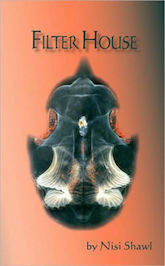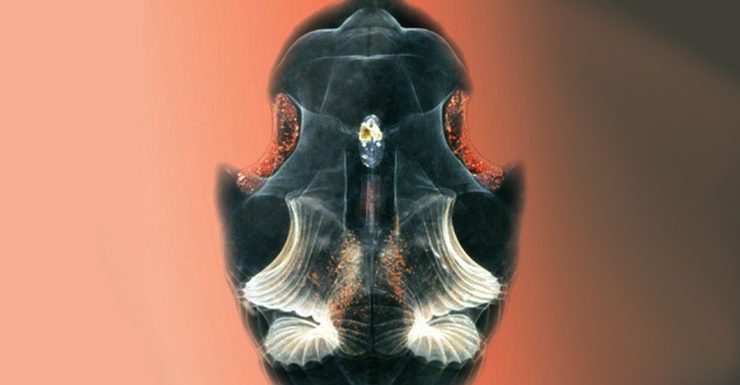In February of 2016, Fantastic Stories of the Imagination published an essay Nisi Shawl wrote called “A Crash Course in the History of Black Science Fiction.” Since then, Tor.com has published her in-depth essays on 18 of the 42 works mentioned. In this very special 19th column, Nisi is taking a break so we can review her short story collection Filter House.
Women in Story
Buy the Book


Filter House
To read Filter House is to walk into a pool of cool water until it closes over your head, and you drift with the rhythm of waves pulsing in your ears. Not to say that each story is about water, or features tranquil scenes. But her prose invites the reader to slow down, take time to read through the story, and allow the words to soak into you.
Every story in Shawl’s collection features a woman: Girls coming of age. Older women trying to hold onto their lives. Women yet to be born. Women who are not classified as human. Women with lovers, mothers, daughters, husbands. They have queer relationships. They live alone. They live in places that are hostile to them, or indifferent, and it is up to them to use their own wits, or magic, or the power of love to make their spaces their own.
Women and Race
Shawl’s stories are steeped in black experiences such as hair braiding. In the opening story, ″At the Huts of Ajala,″ a woman getting her hair braided remembers herself before she was born. In ″Momi Watu,” there’s a mother just finishing up her daughter’s hair and dealing with all the fears of raising her child in a world of parasitic infestation. All these tender moments between women that involve the care of natural hair, and by extension, the care for black selves, are a joy to read.
Other stories center on more serious matters. ″Wallamellon″ shows a girl dealing with gentrification, while her father endures the racism of being the only black man on the police force. In ″Deep End″ a woman who is deemed a “criminal” is downloaded into a white woman’s body so as to colonize a new planet. How does she maintain her black identity in a body that is no longer hers?
One of the most gorgeous and creepy stories is ″The Raineses’.″ On the surface it’s about a young girl, Anniette, spending her summer with her grandmother at an old house that was part of the Underground Railroad. Here, Shawl’s prose is a delight to read as Anniette explores the house’s different rooms. She comes across ghosts who comment on her presence with casual racism, but also lead her to secrets about her own legacy. Unfortunately, Anniette is too young to understand the ramifications of those secrets.
Shawl’s stories do not seek to answer questions or draw conclusions. They only invite us into these women’s lives, complex as they are.
Complex Relationships
Shawl’s stories explore relationships in all their intricacies and frustrations. Even such supposedly simple ones, such as the bonds between mothers and daughters, can be fraught. The mother in ″Good Boy″ doesn’t want to be called ″Mom″ but by her first name. ″Little Horses″ has a black nanny trying to protect her charge from harm when they are kidnapped.
These stories also explore power dynamics. In ″Shiomah’s Land″ the protagonist loses her mother, her name, and her freedom to a goddess. At first she is just a slave to the goddess, but as time goes on, she becomes a confidante, then a lover, and finally a wife. But even though the goddess professes her love, she still has the power to destroy the protagonist’s life if she chooses. It takes centuries for the protagonist to finally leave the goddess. Why does she wait so long?
In ″Maggies,″ an alien named Tata is contracted to help a scientist and his coming-of-age daughter, Kayley, with a terraforming project. Kayley already has a stepmother, but forges a deeper connection with Tata, one which is reminiscent of the humans’ and Oankalis’ bond in Octavia Butler’s Lilith’s Brood series. The relationship between Tata and the scientist is more…discomforting. What is presented as love is obviously not pleasurable to Tata—and yet when the daughter asks, Tata claims love for him: ″Because your father is strong for me and I am weak for him.″
Now that I am older, Tata’s talk of feeling “imbalanced” weighs on me, especially as I think of the #MeToo movement and the abuse from men in positions of authority. Alien women, as much as any woman, any person, should have control over their own bodies.
Spaceships and Cowrie Shells
Shawl’s fantasy is enmeshed with spirituality—her characters do magic with candles and mirrors and, yes, water, but also do ancestor magic: hoodoo and rituals. In “Wallamelon” Oneida prays to the “Blue Lady” to defend her neighborhood. The nanny in “Little Horses” sings a lullaby to put her captors to sleep.
Shawl’s science fiction in Filter House is also intermixed with the divine. When a virulent disease sweeps a colony in ″Good Boy,″ the mother allows herself to be possessed by a funkadelic spirit who pronounces a course of dancing and drugs to be the cure—and it is. And some stories’ SF/divine mashups are hard to describe.
My favorite in the collection is ″The Water Museum.″ It’s post-apocalyptic fiction about a woman who is the curator of a very odd museum and who picks up a hitchhiker she knows has been sent to assassinate her. Instead of letting that happen, she takes him to the museum, which shows the beauty of water in all of its forms. I had to stop and read slowly, drinking in each word.
And now I’ve come full circle in my metaphor.
With its focus on race and feminism as a whole, Filter House has certainly earned its place not only in the history of SF but also on Shawl’s curated list of Black SF. It won the James Tiptree, Jr. Award in 2008, the first book written by a black person to do so, and it was shortlisted for a World Fantasy Award. It taught me that short stories could be both literary and genre fiction, and it enabled me to have my very first fangirl experience with Shawl at WisCon 33. Read this book with a tall, cold glass of water at your side, and also heed the advice Eileen Gunn gives in the introduction: ″Don’t read ‘The Raineses’’ late at night, all alone in the house.″










